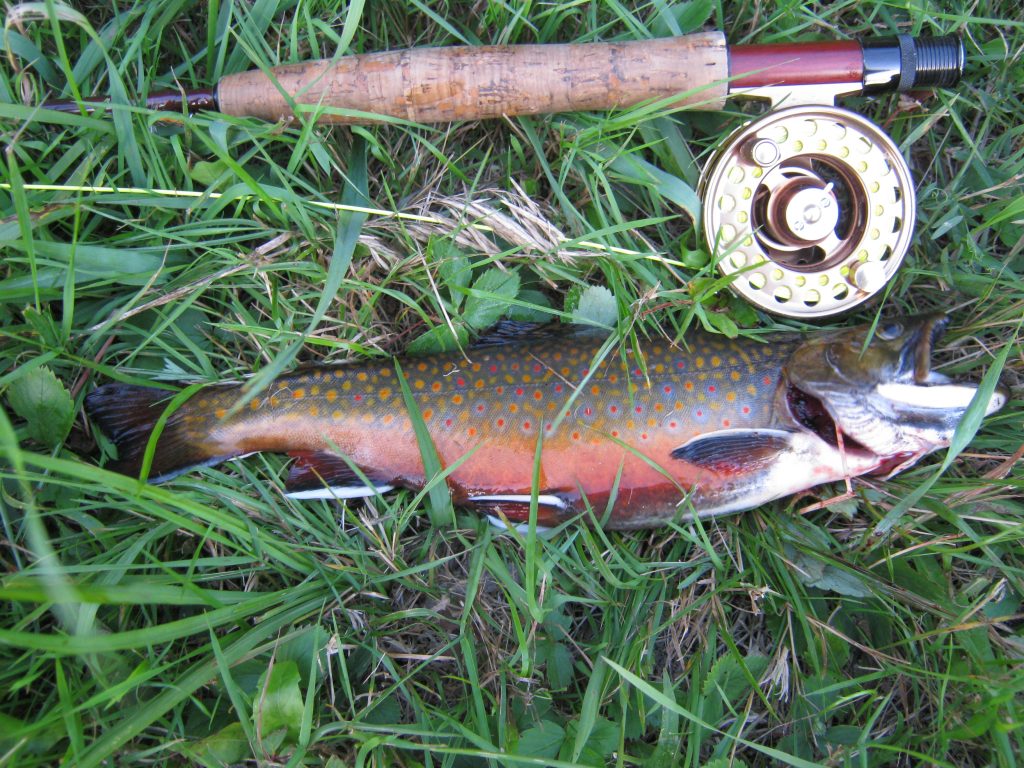Fall Fishing Tactics
 Fall fishing can be feast or famine depending on several factors. The most significant influences on stream and river fishing in the fall are water temperature and volume. Trout and salmon will usually gravitate towards the inlet of a lake or pond in the fall when the water starts to cool and the urge to spawn intensifies. When the waterflow increases, the fish are drawn in and will swim up the river or stream.
Fall fishing can be feast or famine depending on several factors. The most significant influences on stream and river fishing in the fall are water temperature and volume. Trout and salmon will usually gravitate towards the inlet of a lake or pond in the fall when the water starts to cool and the urge to spawn intensifies. When the waterflow increases, the fish are drawn in and will swim up the river or stream.
Some years, fish will come into streams to spawn in late August and other years they will not come in until the last of September. It all depends on the water temperature and weather. On rivers that are dam controlled, many river managers will release water in the fall as an attraction flow. If we have the water reserves in the Allagash Wilderness Waterway (AWW), we will release water at Churchill, Telos and Lock Dams to attract fish into the streams below these dams. Brookfield Power does the same at Seboomook and other dams on the West Branch of the Penobscot watershed.
I have found that the fishing can be excellent when fish first enter the stream and will hit attractor flies with a vengeance! Once fish have been in the stream for a while, they seem to lose interest in hitting flies or lures and must be enticed to bite. Timing is everything with so many outdoor pursuits – fall fishing is no different.
My favorite attractor fly is an orange body Hornberg. I tie these myself just how I like them – on a number 10 hook, with copper tinsel, a few orange calf tail fibers, wood duck wings and a grizzly hackle. I fish it wet or dry depending on how the fish want it.
My brother Mark and I were fishing in one of our favorite places a couple falls ago and after catching a few trout, the fishing slowed. It was one of those years when the water was low and it remained warm until the end of September. Occasionally, a nice brookie would come up and look at our fly but they wouldn’t bite.
We decided to go down the lake and try fishing in the mouth of a couple of the brooks. We sat in the boat watching the water for a few minutes. Occasionally a fish would dimple the water. We tried to figure out what they were rising for but could not figure it out. As I look back on it, I don’t think they were rising for anything other than for the fun of it. I threw out my orange body Hornberg, gave it a twitch and wham! We caught brook trout after brook trout at both locations, there didn’t seem to be any end to them. We have been back to those brooks a couple times fishing and never hit the fishing as good as it was that day.
Fish that are heading upstream to spawn are not really interested in feeding. Therefore, they need to be coaxed into biting. Flies that usually work well in the fall are light or bright colored and might not look like any natural foods. The presentation is also important, the fish that will not take a fly unless it is dead drifted overhead in the spring might not hit unless you make your fly dance on the water in the fall.
The AWW has ample opportunity to catch one of those twenty plus inch brightly colored male brook trout with a hooked jaw that are something to behold!
Photo: Native Allagash Brook Trout in fall spawning colors. Photo credit: Matthew LaRoche
AWW Notes: Ben Hall has been hired as the new ranger at Allagash Lake. Ben was formerly an intern on the waterway from UMaine Fort Kent and the Assistant Ranger at Chamberlain Bridge. Ben has a bachelor’s degree from UMFK in Conservation Law Enforcement.
Matt LaRoche is Superintendent of the Allagash Wilderness Waterway, a Registered Maine Guide and an avid outdoorsman. He can be reached at 207-695-2169 or at matt.laroche@maine.gov
